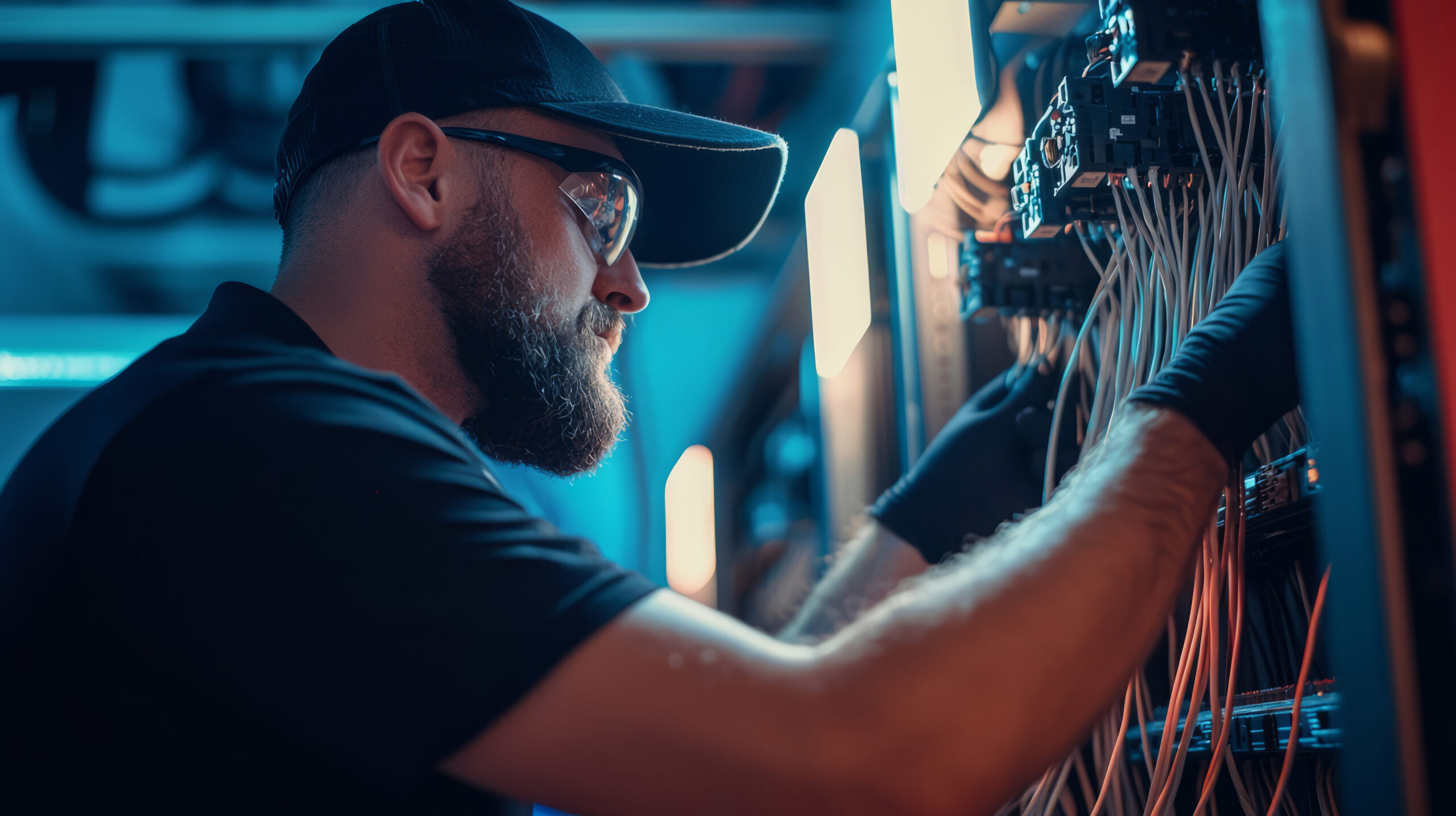In 2025, the demand for high-speed, reliable, and secure connectivity has never been greater. Businesses across California and beyond are turning to fiber optic solutions to meet these evolving needs. The fiber optic installation process plays a pivotal role in ensuring the performance, reliability, and scalability of any fiber infrastructure.
BCS Consultants, a trusted fiber optic installation company based in California, provides end-to-end fiber optic services, including expert planning, execution, and maintenance of optical cabling systems. Their experience and technical knowledge guarantee a seamless installation of optical fiber cable systems tailored for both present and future networking demands.
1. What Is Fiber Optic Installation?
The fiber optic installation process involves the deployment of optical fiber cables that transmit data using light rather than electrical signals. Unlike traditional copper wiring, fiber optics installation provides superior bandwidth, faster speeds, and resistance to electromagnetic interference.
Key Differences:
- Bandwidth & Speed: Fiber optics offer significantly greater capacity and data rates.
- Distance: Fiber installation supports long-distance transmission without signal degradation.
- Interference: Immune to electromagnetic noise, ensuring a more stable connection.
Applications:
- Business campuses
- Data centers
- Smart buildings
- Healthcare facilities
- Educational institutions
2. Pre-Installation Planning
Successful fiber installation requires meticulous planning. Essential steps include:
- Site Assessment: Analyzing the physical site for ideal cable routing.
- Feasibility Study: Evaluating the technical and economic aspects of the fiber installation process.
- Bandwidth Requirements: Forecasting current and future needs to select the right fiber optics solution.
- Network Mapping: Outlining endpoints and cable pathways.
- Fiber Type Selection: Choosing between single-mode and multi-mode fibers based on transmission distance.
- Permits & Compliance: Securing all required permits and complying with California regulations.
3. Selecting the Right Fiber Optic Cables
Choosing the correct optical fiber cable is crucial for performance and durability.
Fiber Types:
- Single-Mode (OS1, OS2): Best for long-distance, high-bandwidth applications.
- Multi-Mode (OM1–OM5): More cost-effective for shorter distances and local networks.
Considerations:
- Indoor vs. Outdoor: Outdoor cables are rugged; indoor cables are flexible and easier to install.
- Environmental Factors: Assess temperature, stress tolerance, and bend radius to ensure longevity.
4. Installation Process Step-by-Step
a. Trenching or Conduit Setup
The first step in the fiber optic installation process involves preparing trenches or conduits to protect and route the cables.
B. Cable Pulling and Routing
Fiber optic internet installation requires cables to be pulled carefully to avoid strain and breakage.
C. Splicing and Termination
- Fusion Splicing: Provides a low-loss, permanent connection.
- Mechanical Splicing: Ideal for temporary or emergency connections.
Connector Types:
SC, LC, and ST connectors are selected based on network type and density.
D. Enclosure and Protection
Installed cables are secured within protective trays and panels to ensure organization and durability.
5. Fiber Optic Testing and Certification
After fiber installation, comprehensive testing is performed to confirm performance:
- OTDR (Optical Time-Domain Reflectometer): Detects faults, bends, and splice losses.
- Light Source & Power Meter Tests: Verify optical signal strength and power loss.
- Loss Budget Analysis: Ensures signal loss remains within permissible limits.
BCS Consultants ensures all fiber optics installation projects meet industry and client-specific standards.
6. Post-Installation Support and Maintenance
Maintaining a fiber internet installation process is vital for optimal performance.
- Routine Inspections: Prevent issues before they impact service.
- Troubleshooting: Quick resolution of signal loss or physical damage.
- SLAs: Define clear maintenance expectations and response times.
7. Benefits of Professional Fiber Optic Installation by BCS Consultants
Partnering with BCS offers unmatched advantages:
- Custom Structured Cabling: Designed for your unique environment.
- Certified Technicians: Skilled professionals ensure quality work.
- Scalable Fiber Infrastructure: Ready for your business’s future demands.
- Proven Industry Experience: Serving California’s top industries with reliable fiber optic solutions.
8. Cost Considerations and Timelines
Factors Affecting Cost:
- Project scope and complexity
- Cable and equipment quality
- Labor and expertise required
Typical Timelines:
- Small Office: A few days
- Enterprise-Level: Several weeks
ROI:
Investing in fiber optics installation results in long-term savings, improved network speed, and scalability.
Conclusion
The fiber optic installation process is an essential step toward building future-ready networks. With BCS Consultants, your business benefits from precision-engineered fiber optic services that ensure robust performance and adaptability.
Need expert fiber installation services? Call BCS Consultants at +1 949-333-1000 or visit our website to get started today.
FAQs
1: How long does the fiber optic installation process take?
A: The duration varies based on project size and complexity. Small installations may take a few days, while larger projects can extend over several weeks.
2: What is the difference between single-mode and multi-mode fiber?
A: Single-mode fiber is designed for long-distance transmissions with higher bandwidth, whereas multi-mode fiber is suitable for shorter distances and is typically more cost-effective.
3: How often should fiber optic networks be tested?
A: Regular testing is recommended, especially after installation, during maintenance checks, or when performance issues arise.
4: Can existing infrastructure support new fiber installations?
A: Often, yes. However, a thorough site assessment is necessary to determine compatibility and any required upgrades

